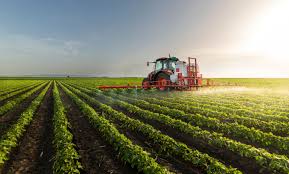The Agreement on Agriculture (AoA) is a legally binding agreement negotiated by members of the World Trade Organization (WTO) in 1994. The AoA seeks to reform trade in the agricultural sector and reduce the subsidies and trade barriers that distort agricultural trade.

The AoA is based on three pillars: market access, domestic support, and export competition. Market access refers to the reduction of tariffs and non-tariff barriers on agricultural products. Domestic support includes the reduction of domestic subsidies and other forms of support that may distort agricultural trade. Export competition refers to the reduction of export subsidies and other measures that may distort trade.
Under the AoA, WTO members committed to reducing trade-distorting domestic subsidies and other forms of support, including price supports, input subsidies, and direct payments. Developed countries were required to reduce their aggregate measurement of support (AMS) levels, while developing countries were given more flexibility in their domestic support programs.
In terms of market access, developed countries were required to reduce their tariffs on agricultural products, while developing countries were given longer transition periods and more flexibility in their tariff reduction commitments. The AoA also established a Special Safeguard Mechanism (SSM) that allows developing countries to raise tariffs temporarily in the event of import surges or price declines.
The AoA has been a controversial agreement, with some critics arguing that it has not gone far enough in addressing trade-distorting subsidies and barriers. Others have argued that the AoA has had negative impacts on developing country agriculture, as they have been forced to liberalize their agricultural sectors without receiving the same level of support and protection that developed countries enjoy.
Overall, the AoA remains an important framework for agricultural trade, and its implementation and effectiveness continue to be a subject of debate and discussion within the WTO.
Table of Contents
Types of subsidies in Agreement on Agriculture
The Green Box, Amber Box, and Blue Box are three categories of subsidies used in the context of the World Trade Organization’s (WTO) Agreement on Agriculture (AoA). These categories were established to distinguish between trade-distorting and non-trade-distorting subsidies.
Green Box Subsidy of Agreement on Agriculture
The Green Box subsidies are considered to be non-trade-distorting and are therefore permitted under the WTO rules. These subsidies include programs that support research and development, environmental protection, and infrastructure development, among others. Green Box subsidies are not subject to reduction commitments under the AoA.
Amber Box subsidy of Agreement on Agriculture
The Amber Box subsidies are considered to be trade-distorting and are therefore subject to reduction commitments under the AoA. These subsidies include price support programs and direct payments to farmers, among others. The level of reduction required for Amber Box subsidies depends on the total amount of domestic support provided by a country.
Blue Box subsidy
The Blue Box subsidies are a subcategory of Amber Box subsidies and are designed to be less trade-distorting. Blue Box subsidies include programs that limit production in exchange for payments to farmers. These payments are linked to acreage, yields, and livestock numbers, among other factors. Blue Box subsidies are subject to reduction commitments, but these commitments are generally lower than those for other Amber Box subsidies.
The purpose of these categories is to encourage countries to use non-trade-distorting subsidies while reducing or eliminating trade-distorting subsidies. By doing so, the AoA seeks to promote a level playing field for agricultural trade and reduce the negative effects of subsidies on global food markets.
Important Links